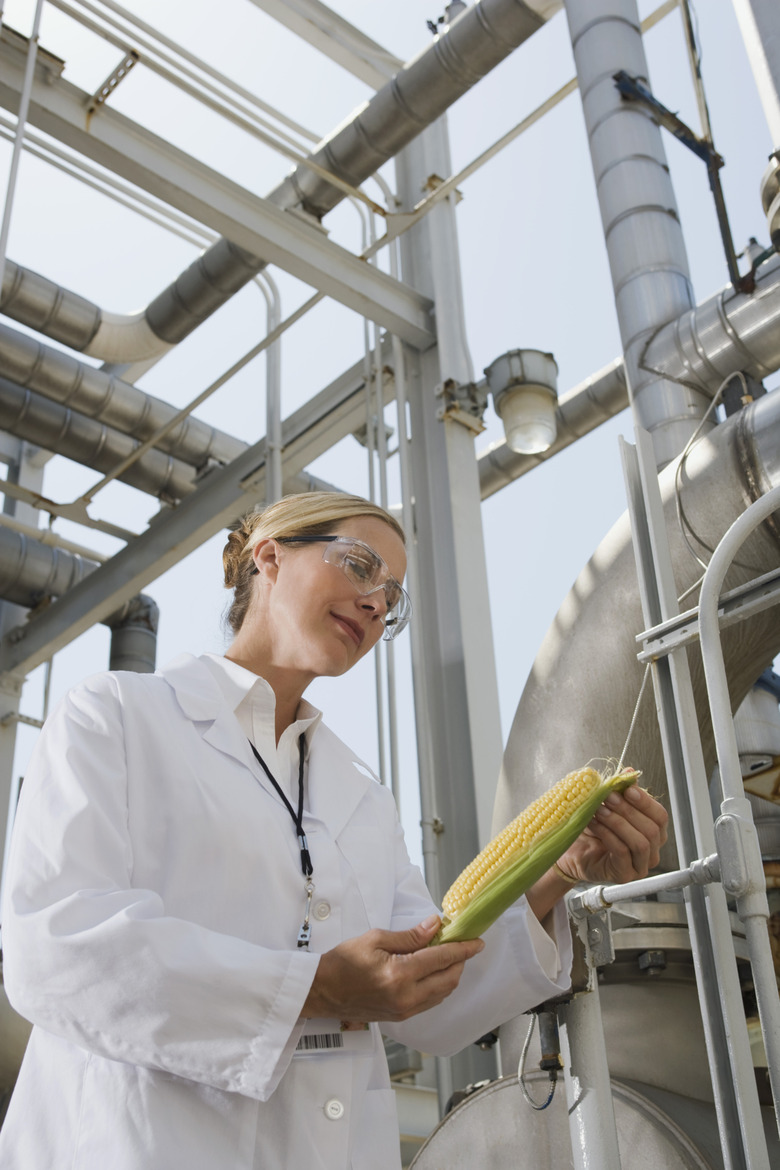How Much Ethanol Is Allowed In Regular Gasoline?
Ethanol is a cellulose-based biofuel, primarily derived from corn in the United States. Ethanol has served as a seasonal fuel additive in gasoline since the 1970s, and federal clean-air mandates have led to significant growth in its use nationwide. Today, it can be difficult to find a gas pump without a notice that the fuel within may contain up to 10 percent ethanol.
The Renewable Fuel Standard
The Renewable Fuel Standard
The United States Environmental Protection Agency maintains the Renewable Fuel Standard, a guide to how much renewable fuel the country must use each year. Set by the Energy Policy Act of 2005 and expanded in the Energy Independence and Security Act of 2007, the RFS serves as an effective minimum deployment of ethanol additives in gasoline. For 2013, the RFS mandates 16.55 billion gallons of renewable fuels, approximately 6 million of which would come from cellulose-based ethanol.
State and Local Mandates
State and Local Mandates
In addition to the RFS, some states and cities have their own mandates for use of ethanol blends in fuel. The Clean Air Act mandates that municipalities that cannot reach minimum air quality standards must use reformulated gasoline to reduce emissions, and some other areas have adopted these guidelines voluntarily. In addition, Minnesota, Hawaii, Missouri, Oregon and Florida have all passed laws mandating the use of 10% ethanol blends at fuel stations within their borders, and Washington requires 2% of all fuel sold within the state to be ethanol-based.
E10 Fuel
E10 Fuel
The most common gasoline and ethanol blend is E10, consisting of up to 10 percent ethanol and 90 percent gasoline. This ratio increases the octane of the fuel, and reduces harmful emissions as well. E10 started out as a seasonal blend in many parts of the country, but the combination of mandates and incentives for fuel companies to use renewable resources has significantly increased its use. More than 95 percent of gasoline sold in the United States is E10, and automakers have approved its use in all modern vehicles.
E15 Fuel
E15 Fuel
As the Renewable Fuel Standard increased the required ethanol volume in the nation's fuel supply, ethanol manufacturers pushed for the adoption of an increased ethanol blend. In 2010, the EPA issued partial waivers that allowed the development of a 15 percent ethanol standard, called E15. Initially, the agency only approved this fuel blend for 2007 model vehicles or newer, but in 2011 expanded its recommendations to cover light-duty cars and trucks from the 2001 model year. Concerns over potential damage to older vehicles from the new ethanol blend led the agency to develop new labeling and dispensing rules in order to help prevent consumers from accidentally selecting the wrong fuel for their vehicles.
References
- U.S. Environmental Protection Agency: Renewable Fuel Standard (RFS)
- U.S. Environmental Protection Agency: EPA Proposes 2013 Renewable Fuel Standards
- U.S. Environmental Protection Agency: RFG Areas
- General Aviation News: The Mythical E10 Mandate
- U.S. Department of Energy: Ethanol Blends
- U.S. Environmental Protection Agency: E15 (A Blend of Gasoline and Ethanol)
- U.S. Environmental Protection Agency: E15: Misfueling Mitigation Plans
Cite This Article
MLA
Kazmeyer, Milton. "How Much Ethanol Is Allowed In Regular Gasoline?" sciencing.com, https://www.sciencing.com/how-much-ethanol-is-allowed-in-regular-gasoline-12730688/. 28 October 2013.
APA
Kazmeyer, Milton. (2013, October 28). How Much Ethanol Is Allowed In Regular Gasoline?. sciencing.com. Retrieved from https://www.sciencing.com/how-much-ethanol-is-allowed-in-regular-gasoline-12730688/
Chicago
Kazmeyer, Milton. How Much Ethanol Is Allowed In Regular Gasoline? last modified August 30, 2022. https://www.sciencing.com/how-much-ethanol-is-allowed-in-regular-gasoline-12730688/
